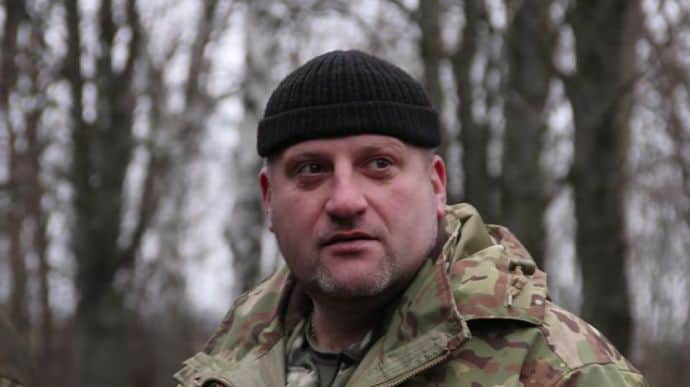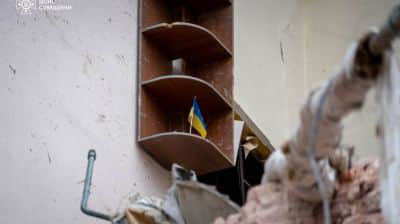Chonhar bridges were mined and bridges over Dnipro River were not – Ukrainian General Sokolov

The bridges to Crimea in Chonhar have been mined since 2014, but they were not blown up at the beginning of Russia’s full-scale invasion of Ukraine. The bridge from Henichesk to Arabat Spit was partially blown up, and the bridges across the Dnipro River in Kherson and Nova Kakhovka were not mined at all.
Source: Major General Andrii Sokolov, who at the beginning of the invasion was Deputy Commander of the Operational Command Pivden (South) and was in charge of the Pivden grouping of troops, in an interview with Ukrainska Pravda
Details: When asked why the bridges, up to a dozen of which are in Kherson Oblast, were not blown up, in addition to the Chonhar Bridge, Sokolov said that the Russian army was most likely hindering this.
Sokolov noted that all the bridges and dams are located near Chonhar, on the Melitopol front. There are no bridges with Crimea on the other front – Kalanchak and Kherson – and there are two land isthmuses: one to Chaplynka and the other to Kalanchak.
Quote: "Why weren’t the bridges blown up? We know from an interview with Ivan Sestryvatovskyi, a soldier from the 137th Battalion, that there were attempts to blow them up. But you have to understand that the enemy realises the importance of these bridges and crossings, and is also taking measures.
From my experience, I can say that bridges should be blown up not when the enemy is standing in front of them, but before they approach, when they have no firepower to hit the bridges. Then we can hope that the task will be completed 100%.
And when the enemy is already in front of the bridge, they fire at the bridge itself and use sabotage groups to make an impact.
In Henichesk, on the Arabat Spit, the bridge was blown up. Not completely, but it was blown up. There, a sailor of the 137th Battalion had to perform a task at the cost of his life."
Details: Sokolov explained that the defender was unable to move away from the bridge in Henichesk because the Russians were already firing, trying to prevent the bridge from being blown up. He was killed because the Russians were attacking the area, and "everything blew up at once".
He added that everything on the border with the Autonomous Republic of Crimea was equipped in 2014 and maintained as it was. That is, the minefields in Chonhar and Henichesk have not been removed: "On the border itself, the barriers and minefields were set up as they were in 2014, and everything remained the same."
But in 2014, other bridges on the North Crimean and Kakhovka main canals were also mined. However, a mined bridge on peaceful territory cannot be left unattended. Since 2015, the number of troops has been decreasing – and over time, some of the facilities were demined because there was no one to maintain them.
Quote: "All the ammunition from there was in a warehouse in Chaplynka. And when the great war began, I ordered that they urgently receive ammunition and blow up these bridges across the canals. We managed to blow up some bridges, and the Russians had already reached some others."
Details: As for the minefields in the territory where there was no military action prior to 2022, they were marked with both a special tape and pointers on the terrain. As Sokolov said, not only residents, but also the Russians knew about these minefields. That is why the Russian troops fired at them on the night of the invasion.
Asphalted roads were not mined, because the border traffic with Crimea was still active there, and people and goods travelled along them.
Sokolov said that "they were prepared, they carried explosives; the explosive substance was set in Chaplynka, mining was planned, but it did not happen, because the order for additional mining was not received" from the Russian leadership.
As for whether the Antonivka and Nova Kakhovka bridges should have been blown up after the retreat of the 59th brigade from Oleshky, Sokolov only replied that he could not influence it.
Quote: "The Dnipro River is of strategic importance. There should have been a strategic line of defence there, and some other military formation should have been responsible for it. Because it would be wrong to hope that our grouping of troops with the existing forces would be able to hold the enemy in Kherson Oblast, and then to be responsible for ensuring that they do not cross to the other bank of Dnipro.
In general, a strategic defence line should’ve been created there, at least in certain areas – near the Antonivka bridge and the Nova Kakhovka dam – without counting on our small group of forces. This should’ve been done in good time, before the war.
Why was this not done? It's hard for me to say. The stabilisation operation stipulated that I was responsible for that side, because there is also Kherson Oblast.
But the enemy started a war. And the defence operation foresaw it was no longer my territory. My territory passed along the left bank of Dnipro. I didn't have the assets and personnel needed even for a stabilisation operation, let alone for defence."
Details: Sokolov concluded that "the bridges across Dnipro were not mined."
He does not know who was supposed to take care of this on the right (western) bank of Kherson Oblast.
"I could not have any influence on the process of mining bridges in Kherson, because I did not even have the material to mine them. And I also needed equipment, time and people who would carry out the mining," said Sokolov, who on 24 February 2022, commanded the "South" troop group.
Ukrainska Pravda is the place where you will find the most up-to-date information about everything related to the war in Ukraine. Follow us on Twitter, support us, or become our patron!





